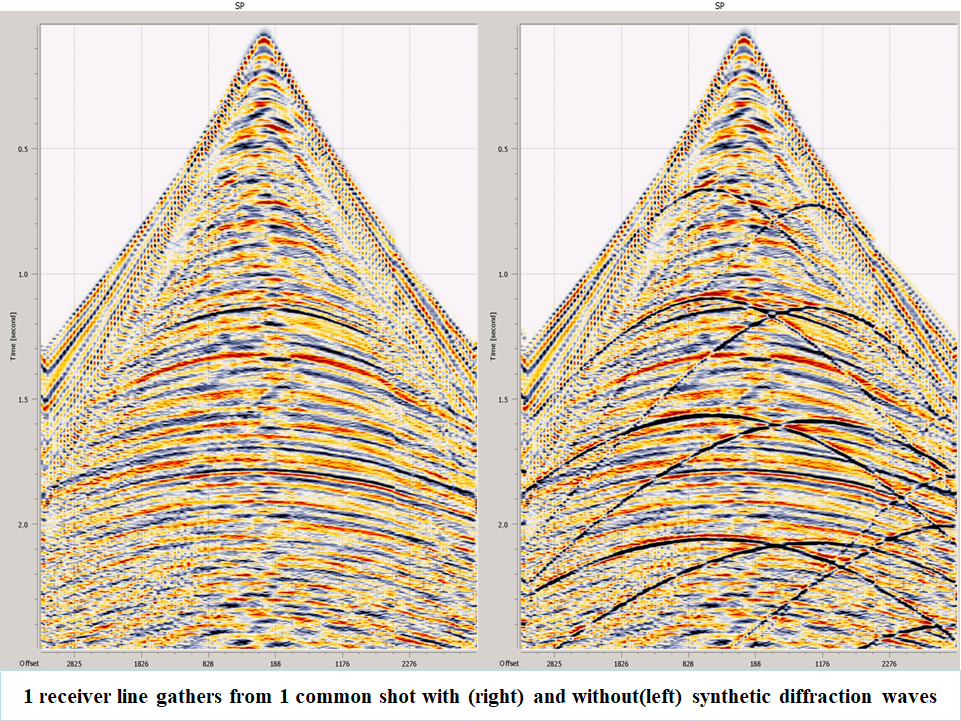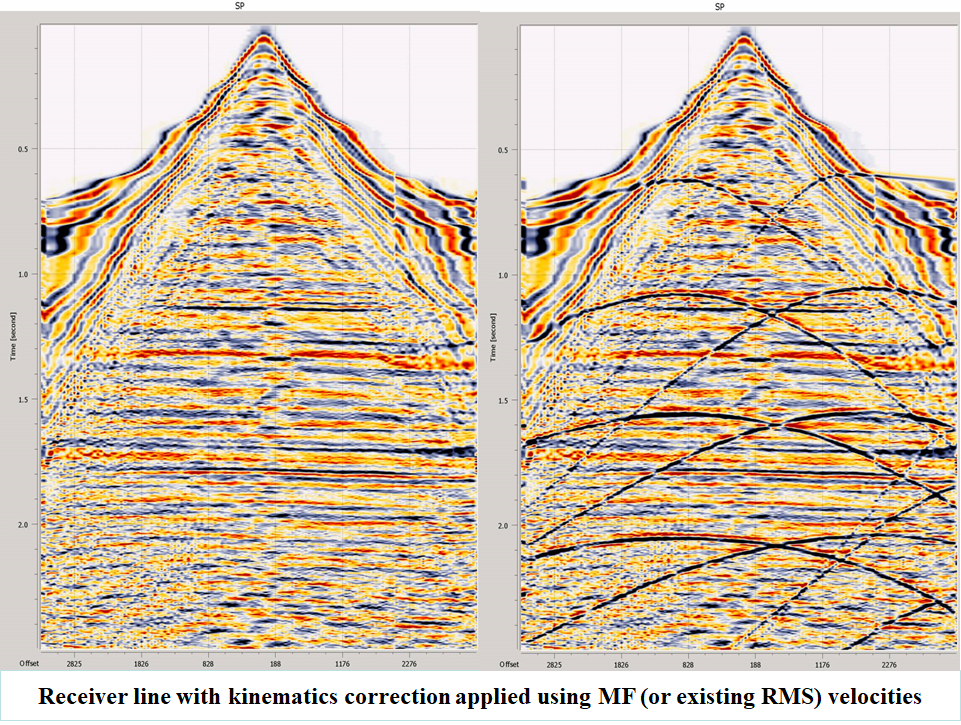Reflection attenuation process is a most crucial part of Diffraction Imaging technology and based on wavefield separation algorithm that takes into account velocity and dip of reflections.
The main module used for reflection attenuation process is [Wave separation (HRWS)] module that include all the steps described below.
The processing should include following steps:
•Parameterization according to shown below on the right hand side images
oModeling of diffraction energy into existing wavefield in order to reduce impact on factors below on result produced by DI algorithm
▪Source/receiver geometry
▪Energy of the wavefield
▪Velocity field related to the wavefield
•Retrieving subset/gather for testing. It's advised to work on individual receiver-line gather of one common shot and test it on several locations.

•Apply move-out correction by Vmf-rms or Vrms

•Shift to Datum prior to applying reflection attenuation algorithm
•Apply reflection attenutation by local plain wave separation - testing different parameters of the filter in order to kill anything aside synthesized diffraction energy

•Remove kinematic correction from the data and place back to topography datum

After completion
•Running the processing with chosen parameterization on entire dataset .
oTheoretical value of DI result in position of modeled diffraction wave should be 1 (100%)
oMeasured value for each modeled diffraction wave position should be preserved. This is the calibration (normalization) factor for this position which we need to find. The value of that factor will be between 0 to 1.
oCreation of multidimensional volume with calibration factor for each imaging sample of DI result. The calculated semblance either calculated for each sample of imaging output volume or at any locations of imaging output volume and then interpolated / extrapolated according to complete output imaging dimensions
Best practice tip:
•Due to heavy load on disk and in order to achieve best performance, it advised that input data will be stored on fast storage, preferably SSD drive.